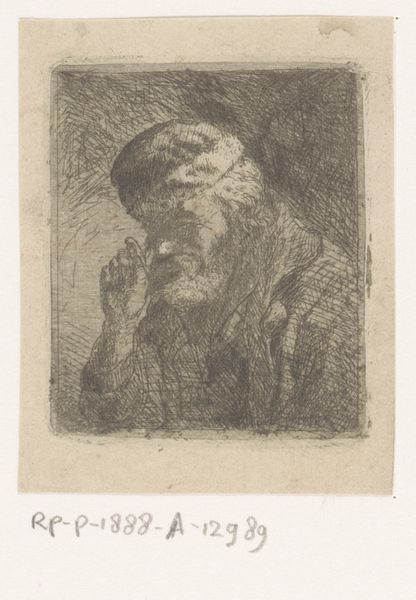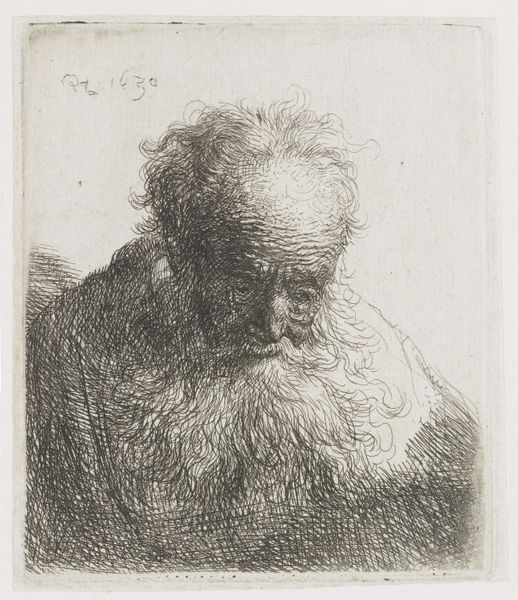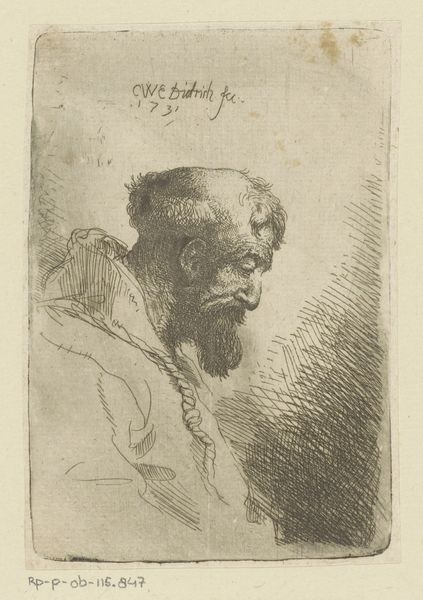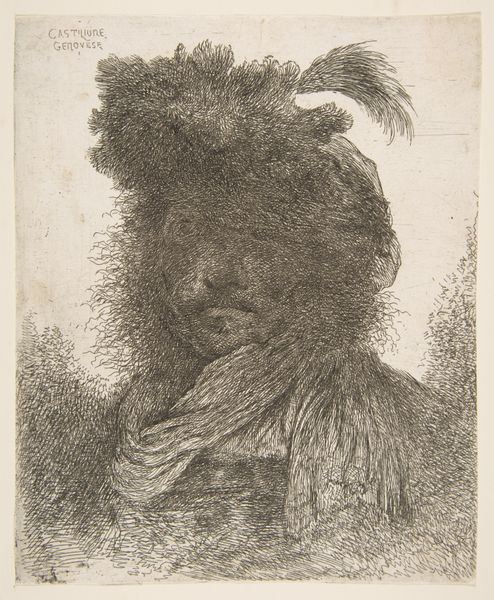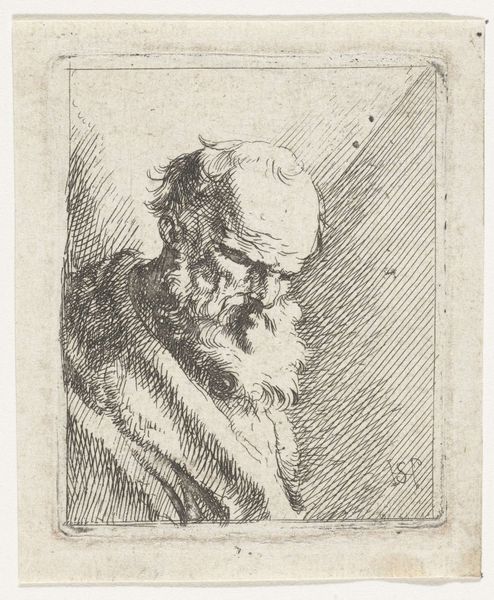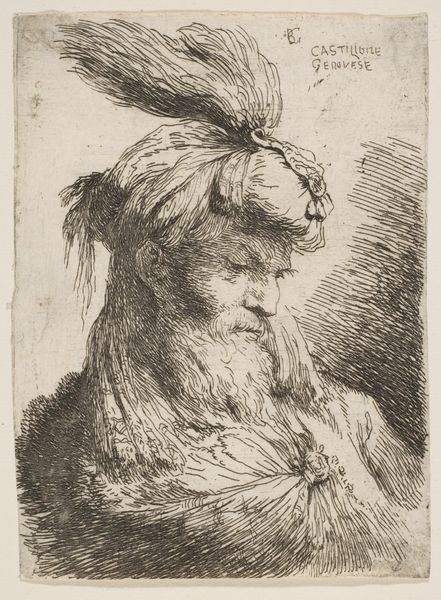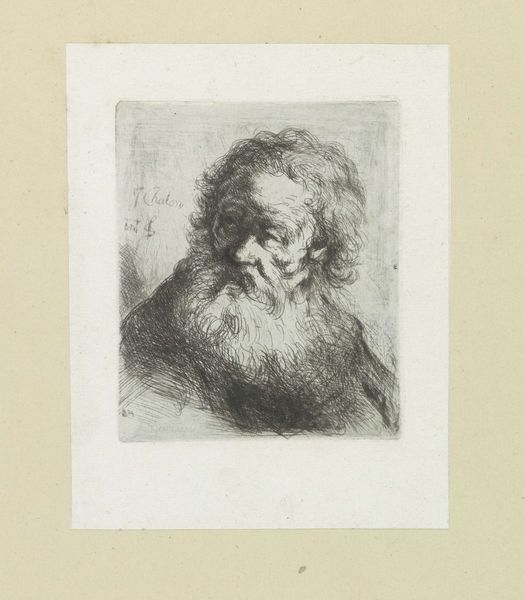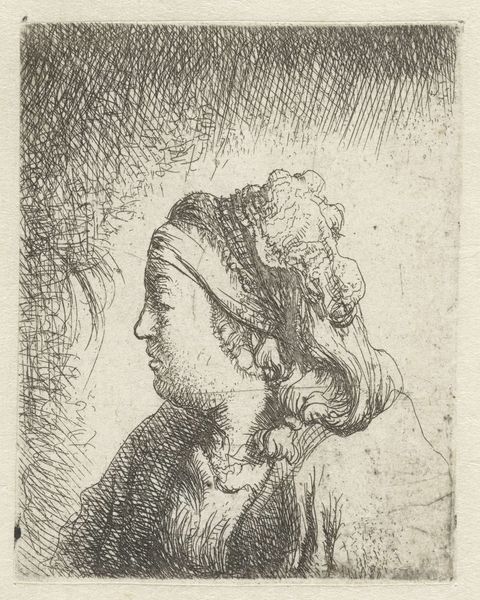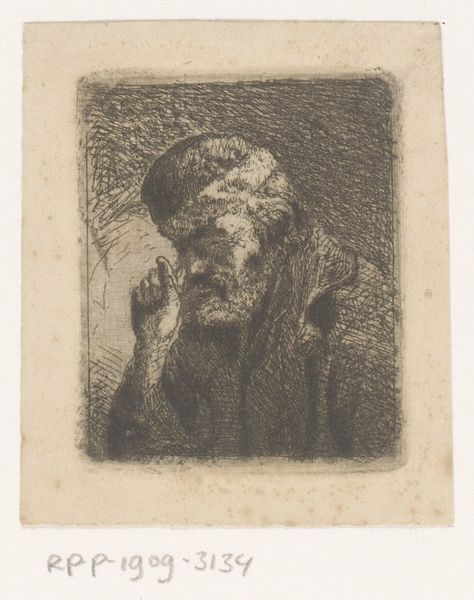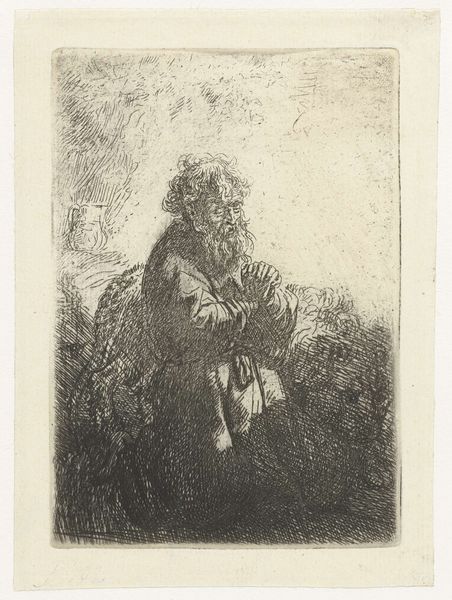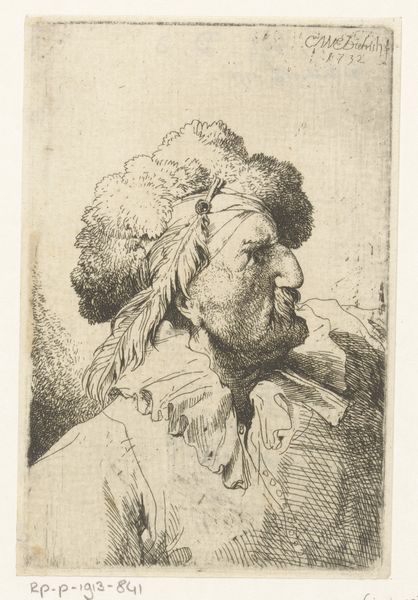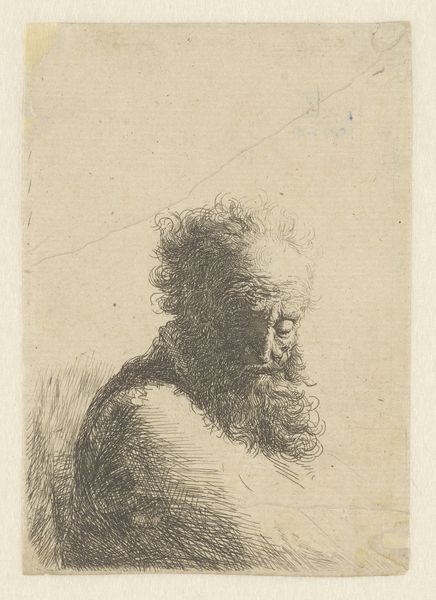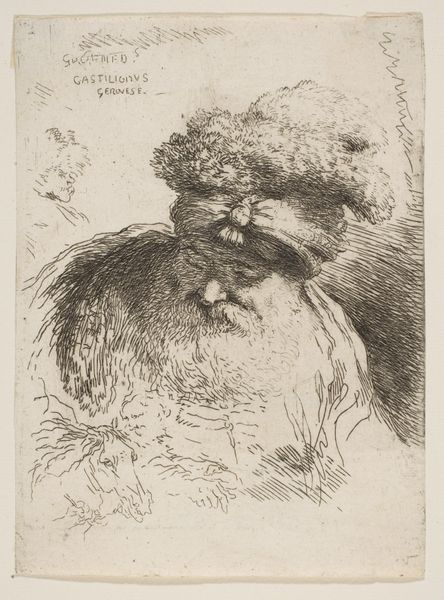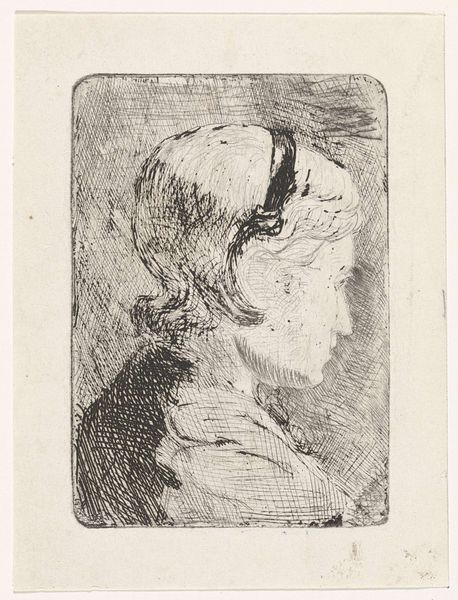
Old Man with Flowing Beard (head bowed forward 1630
0:00
0:00
print, etching
#
portrait
#
baroque
#
dutch-golden-age
# print
#
etching
#
portrait drawing
#
history-painting
Dimensions: 3 9/16 x 2 15/16 in. (9.1 x 7.4 cm) (plate)
Copyright: Public Domain
Rembrandt van Rijn rendered this etching of an old man with a flowing beard. The bowed head is a profound symbol, resonating with centuries of artistic and religious imagery representing humility, introspection, and sorrow. We see this motif echoed in depictions of Christ in Gethsemane, the penitent Magdalene, and countless figures burdened by grief or contemplation. The flowing beard is a signifier of age, wisdom, but also vulnerability. Think of Moses, his beard a symbol of divine authority, now bowed in disillusionment. Consider how, over time, the portrayal of this melancholic posture has evolved, shifting from religious piety to secular expressions of human condition. The collective memory of suffering and introspection is palpable, engaging viewers on a deep, subconscious level. Rembrandt masterfully conveys an intense emotional state through this simple yet powerful gesture, connecting us to a shared experience of human vulnerability. It is a poignant reminder of the cyclical nature of symbols, resurfacing through history, constantly evolving, and taking on new meanings.
Comments
minneapolisinstituteofart almost 2 years ago
⋮
Rembrandt left behind scant writings about himself. His only surviving comment about his art refers to expressing "the greatest and most natural emotion." He dedicated himself endlessly to this goal, and depictions of the elderly were an important vehicle for his investigations. The effects of old age fascinated Rembrandt, and these sensitive renderings exemplify his quest to humanize his subjects. Around 1630 there was a lively market for such humble, affecting images, which could be understood immediately, without the aid of biblical or classical texts.
Join the conversation
Join millions of artists and users on Artera today and experience the ultimate creative platform.
